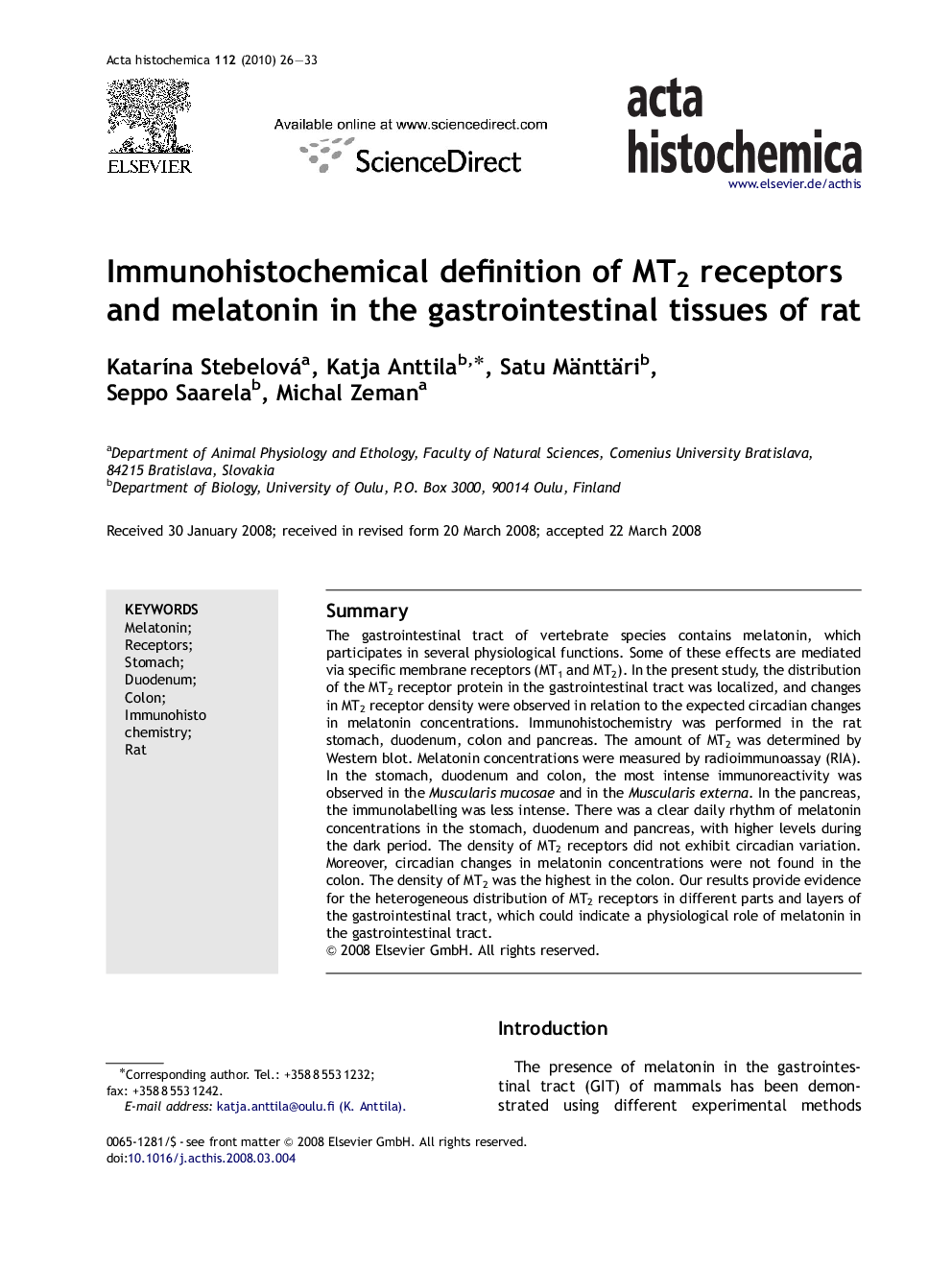| Article ID | Journal | Published Year | Pages | File Type |
|---|---|---|---|---|
| 1923855 | Acta Histochemica | 2010 | 8 Pages |
Abstract
The gastrointestinal tract of vertebrate species contains melatonin, which participates in several physiological functions. Some of these effects are mediated via specific membrane receptors (MT1 and MT2). In the present study, the distribution of the MT2 receptor protein in the gastrointestinal tract was localized, and changes in MT2 receptor density were observed in relation to the expected circadian changes in melatonin concentrations. Immunohistochemistry was performed in the rat stomach, duodenum, colon and pancreas. The amount of MT2 was determined by Western blot. Melatonin concentrations were measured by radioimmunoassay (RIA). In the stomach, duodenum and colon, the most intense immunoreactivity was observed in the Muscularis mucosae and in the Muscularis externa. In the pancreas, the immunolabelling was less intense. There was a clear daily rhythm of melatonin concentrations in the stomach, duodenum and pancreas, with higher levels during the dark period. The density of MT2 receptors did not exhibit circadian variation. Moreover, circadian changes in melatonin concentrations were not found in the colon. The density of MT2 was the highest in the colon. Our results provide evidence for the heterogeneous distribution of MT2 receptors in different parts and layers of the gastrointestinal tract, which could indicate a physiological role of melatonin in the gastrointestinal tract.
Related Topics
Life Sciences
Biochemistry, Genetics and Molecular Biology
Biochemistry
Authors
KatarÃna Stebelová, Katja Anttila, Satu Mänttäri, Seppo Saarela, Michal Zeman,
